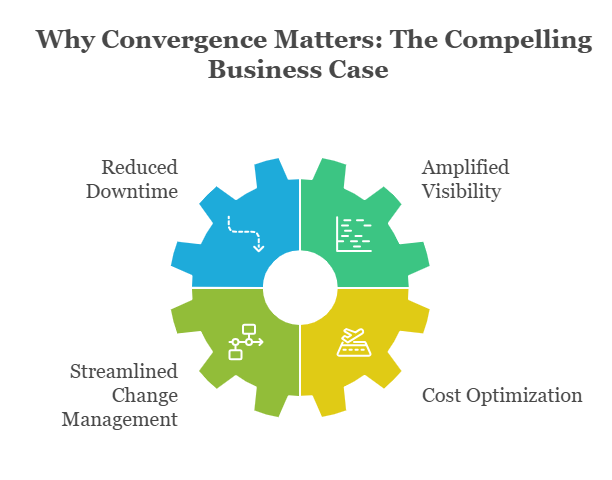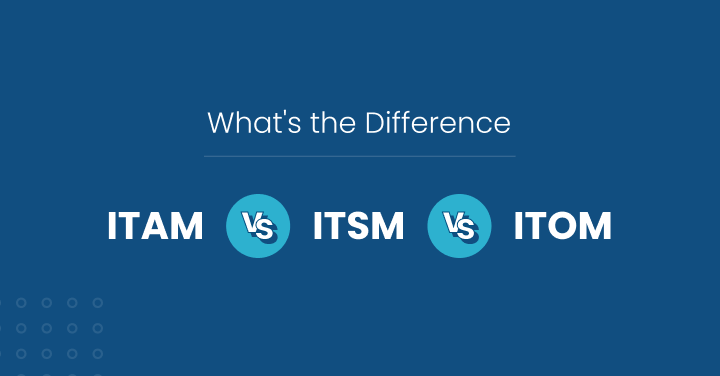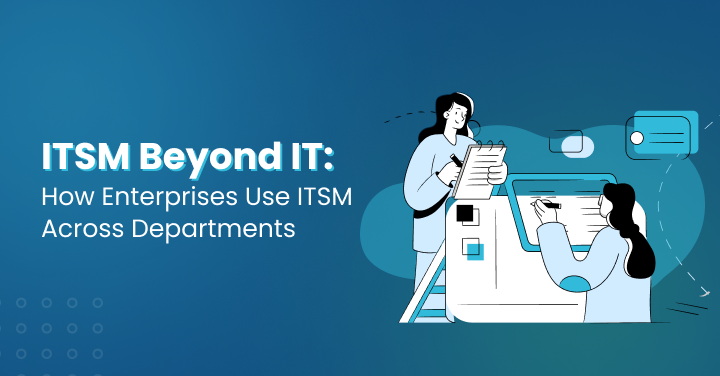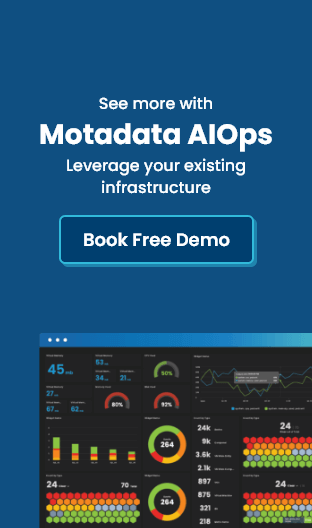The need to differentiate IT Service Management (ITSM) and Enterprise Asset Management (EAM) has now become impractical in an era of immense technological complexity and unlimited demands for operational efficiency.
Organizations today increasingly rely on both digital services and physical assets to derive value; however, siloed processes and disparate data repositories lead to slow incident resolution, uncoordinated change initiatives, and hidden risks.
Bridging these domains through a unified operations model allows businesses to treat IT infrastructure and equipment assets as two sides of the same coin—so a server update automatically generates the right maintenance work order, just as a pump failure automatically raises an IT alert.
For organizations, integrating the serviced behavior of ITSM and the life-cycle focus of Enterprise Asset Management (EAM) is a merger that gives an enterprise a genuine single source of truth, providing real-time visibility, streamlined change management, and predictive insight across IT and operational technology (OT) environments.
Such a synergy would, in turn, shorten MTTR and minimize unplanned downtime, further leading to predictive optimization, may it be in the form of predicting part replacement, automation of alerts based on sensor data, or orchestrating approvals across teams.
Understanding the Foundations: ITSM and EAM Defined
ITSM provides best practices for the delivery, management, and improvement of IT services, which are not acted on by the management according to ITIL; the prescribed frameworks describe processes for incident management, problem management, and change control, ensuring the business IT assets are aligned with service-level requirements.
EAM is such a stronghold in the meaning of enterprise resource management that it underlies and renders meaning only to the life cycle management of physical assets- equipment, facilities, and infrastructure. Preventive maintenance scheduling, work order management, and performance analytics are some of the core functions of EAM.
ITSM governs digital service delivery while EAM orchestrates physical asset uptime. Yet both depend on shared processes—incident response, change management, and root-cause analysis. Recognizing this overlap is the first step toward convergence.
Why Convergence Matters: The Compelling Business Case
Reduced Downtime
When a machine breakdown creates an EAM work order and an ITSM incident, different processes act as impediments to timely resolution.
A common platform provides one version of the truth: one ticket, one task for assignment, and one concerted effort towards resolution, which effectively reduces the mean time to repair (MTTR).
Amplified Visibility
Integrated dashboards exhibit real-time key performance indicators on information technology and operational technology. Maintenance managers can examine the health of network devices while IT teams examine metrics of equipment performance aligning priorities and preventing blind spots.
Streamlined Change Management
Providers of EAM-driven equipment upgrades often propose IT changes (e.g., sensor firmware updates). A centralized change-approval board ensures that risk assessments take operational continuity and cybersecurity into account to minimize unplanned disruptions..
Cost Optimization
Unified analytics eliminates duplicate license fees, redundant data-entry efforts, and avoidable emergency repairs. Organizations typically realize a 10–15% reduction in total cost of ownership (TCO) within the first year of ITSM–EAM integration.
Key Pillars of Successful Integration
Shared data model
A common data model underpinning the concept of integrating ITSM with EAM, which would lay down a true one source of truth.
This would make the CMDB congruent with the asset registry, which means that organizations are capturing both digital attributes, for example, IP address, firmware version, and software dependencies, and physical attributes such as serial number, maintenance history, and warranties.
This makes it possible that an asset repository has no conflicting records, increasing speed in diagnostics, and empowers stakeholders to realize the end-to-end transparency on the status and context of each asset.
Collaborative incident and work-order lifecycle
Seamless collaboration between IT and maintenance teams occurs in a lifecycle of incidents and work orders. Instead of managing multiple tickets, there is a single service portal that users can operate through, whereby incidents, service requests, and work orders all have similar automated workflow processes.
For instance, when an ITSM alert is generated regarding network degradation on a manufacturing robot, a threshold will be triggered, whereby an EAM work order for mechanical inspection will be generated automatically. This orchestration would greatly cut down MTTR by making manual coordination bottlenecks disappear.
Cross-functional Change Advisory Board (CAB)
The governance model includes a cross-functional Change Advisory Board representing IT, maintenance, engineering, and cybersecurity.
The board then considers all changes, whether firmware updates, software patches, or equipment retrofits, through a systems-based view using a unified data model and digital-twin simulations.
Risk assessments are made concerning operational continuity and regulatory compliance, including factors of cyber-resilience to minimize rework and unplanned rollbacks.
Integrated analytics and reporting
At last, integrated analytics, combined with reports, correlate ITSM metrics (incident volumes, SLA compliance) and EAM KPIs (preventive maintenance adherence, asset availability).
Sophisticated dashboards, powered through machine-learning algorithms, continually extract anomalies-such as the sudden surge of software errors occurring alongside increased vibration readings on a critical pump-for proactive interventions.
This axis of insight transforms data as feed into prescience, continually improving the enterprise through forward-looking easements against any kind of obsolescence.
Real-World Scenarios Illustrating Convergence
IIoT-Driven Preventive Maintenance
A real-time data feed is received from vibration and temperature sensors mounted on critical gearboxes in a mega automotive plant to the IT-Service Management platform.
Upon detection of the progressive increase in the vibration trends above a pre-defined threshold by the IIoT Analytics engine, an incident in the ITSM is raised automatically.
The orchestration rules of the company then tie this incident to the respective gearbox asset in the maintenance management module, automatically creating a work order with priority assigned to a field technician.
The view includes the complete context of sensor history, maintenance manuals, spare parts availability, and technician skillsets, using just one ticket so that the technician arrives prepared, conducts the inspection, replaces the worn bearing, and closes the loop.
The integrated procedure prevented an accidental failure and saved around 8 hours downtime and tens of thousands of loses potentially in production.
Overcoming Common Pitfalls
Data fragmentation
There are almost always hurdles faced by organizations; however, an inherent clear vision of ITSM-EAM convergence. One of the most common issues has been data fragmentation because separate CMDBs and asset registries often use different identifiers, thus duplicating records and providing numbers that are not trustworthy.
Mitigation starts with a strong data governance scheme. The idea is to set up the master data stewards, define naming conventions, and automate record synchronization. Regular audits on the unified repository will catch discrepancies early and maintain the integrity of your single source of truth.
Process misalignment
Process misalignment is yet another barrier. IT teams are mainly concerned with the resolution of incidents under SLA considerations, while maintenance groups take care of equipment uptime and long-term lifecycle planning.
Without an agreed-upon terminology and common definitions of priorities, severity levels, and request types, the hand-offs would turn into blame games.
A unified service catalog with standardized workflows will enforce a common priority schema, ensuring teams treat a severity 2 network outage with the same urgency as a critical pump failure, thereby enhancing mutual accountability.
Cultural resistance often arises when teams see convergence as a threat to their long-standing roles or autonomy.
Technology overreach
Sometimes companies buy really big bundles that promise to cover everything but are limited from the start in terms of interoperability.
To avoid project fatigue and soaring costs, go small-first-think sensor-triggered work orders or shared change approvals.
Then test for value before scaling. To support convergence incrementally, make sure to invest in platforms with open APIs and modular architectures, so you don’t have to rip and replace.
Steps to Get Started
Assess Current Maturity
To start, outline the existing ITSM and EAM landscape of the organization. Document the tool, major processes like incident management, work-order workflows, and change controls. Document data repositories, such as a CMDB and asset registry, as well as stakeholder contributions.
Perform a gap analysis to identify silos, imprecise data, and manual hand-offs that pose an efficiency threat. This provides an objective maturity baseline to map the integration road and define realistic milestones.
Define Integration Objectives
By recognizing high-value uses aligned with strategic business goals—such as lessening unplanned downtimes, speeding up change cycle time, or improving SLA compliance—organizations can quantify expected benefits, including a normalized 20% quicker MTTR, 15% lower emergency repair costs, and clearly defined success criteria for each pilot.
Prioritize the “quick wins” such as automated sensor-triggered work orders before moving on to bigger project ideas.
Select an Integration Platform
Software evaluation for CMMS and ITSM suits must support IT and EAM modules natively. Robust API ecosystems with out-of-the-box connectors for IIoT devices, a common data model, configurable workflows, and reporting dashboards should get ample consideration.
Opt for a solution that is modular in architecture so that you can ramp up capability without compromising the core operational flow.
Pilot Key Use Case
The team will develop a small-scale pilot initiative, focusing on the most important use case, such as preventive maintenance orchestrated by ITSM alerts or synchronized change approvals between IT and facilities.
Form a cross-functional team to define workflow rules and data mappings for user training materials. Track the performance of the pilot according to the defined KPIs, collect feedback, and iterateon process refinements..
Scale and Iterate
After the pilot’s success has been validated, initiate the integration across other asset classes, sites, and processes. Use the lessons learned to smooth the path for governance, add further data quality, and increase the unified service catalog.
Continually track integrated KPIs-MTTR, asset availability, SLA compliance and apply further features like predictive analytics and AIOps as your organization matures.
Regularly re-evaluate your road map in light of changing business requirements and technological innovations..
Conclusion
Unified ITSM-EAM operations mark just such a shift from reactive firefighting to proactive resilience. Bringing digital service workflows into line with physical asset lifecycles eliminates silos and speedily resolves incidents as it reduces unplanned downtime.
Maintenance and IT teams will have a feedback loop so that they speak the same language, act using a single source of truth, and orchestrate changes with precision; maintenance will become a strategic enabler rather than just a cost center.
With their digital transformation journeys, enterprises now find themselves in need of ITSM and EAM integration as a firm prerequisite for sustained competitiveness.
Integrated analytics and automated workflows drive immediate efficiency gains and can also provide predictive insights to ensure every asset-from server to pump-is performing at its best.
The present-day landscape does not consider unified operations as just an advantage; it forms the bedrock of future-ready, resilient organizations.
FAqs:
ITSM governs the management of digital services and IT assets, that is, incident, change, and service request management, whereas EAM works on the full life cycle of physical assets: preventive maintenance, management of work orders, and tracking of performance of assets. Convergence brings these under a common operational framework.
Integration involves removing silos, reducing mean time to repair (MTTR), and unplanned downtime via a single source of truth in reality. It will refine workflow processes by automating the handover between IT alerts for maintenance work orders and analytics to help create a holistic view of informed decision-making.
Aim for a maturity assessment of existing ITSM and EAM processes; thereafter, establish high-value integration objectives and select a platform that supports shared data models and modular workflows.
Get started with a small-scale pilot (e.g., sensor-triggered work orders), and then go on to a gradual, iterative scale such that KPIs are monitored continuously and process improvement is adapted.
A cross-functional CAB having representatives from IT, maintenance, engineering, and cyber security evaluates proposed changes with the help of a single platform and digital-twin simulations, such as firmware updates or equipment retrofits – risks, compliance, and operational impact are considered to ensure seamless execution.
Organizations may notice speeds of incident resolution up to 15% reduction in total costs of ownership, higher asset availability, and SLA compliance improved.
Predictive maintenance and anomaly detection are the next steps enabled by integrated analytics for continuous improvement and operational resilience.







